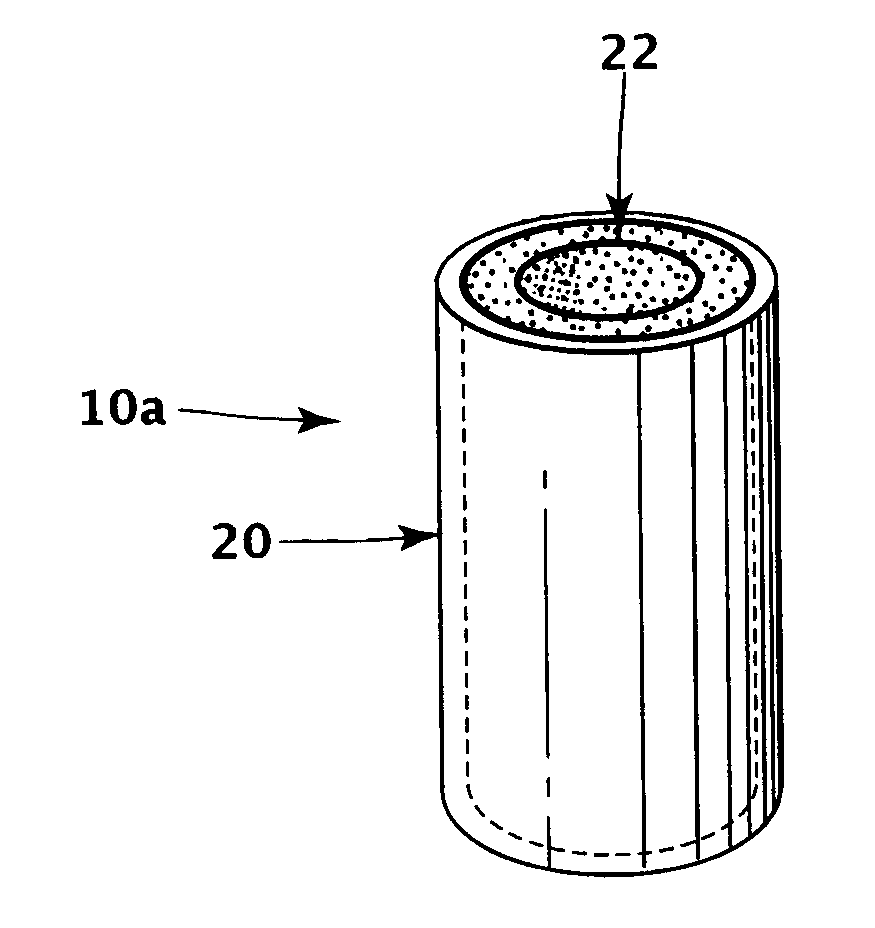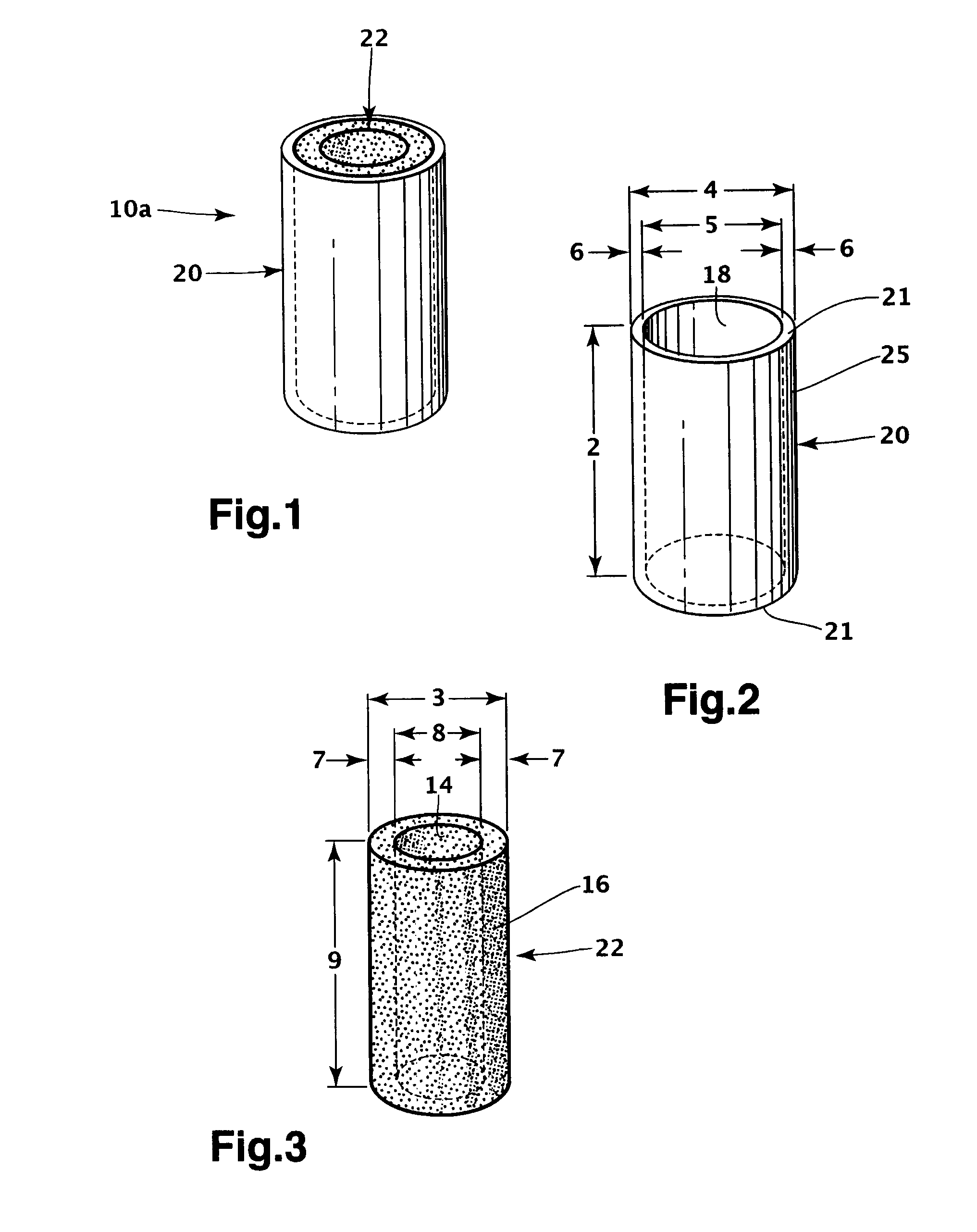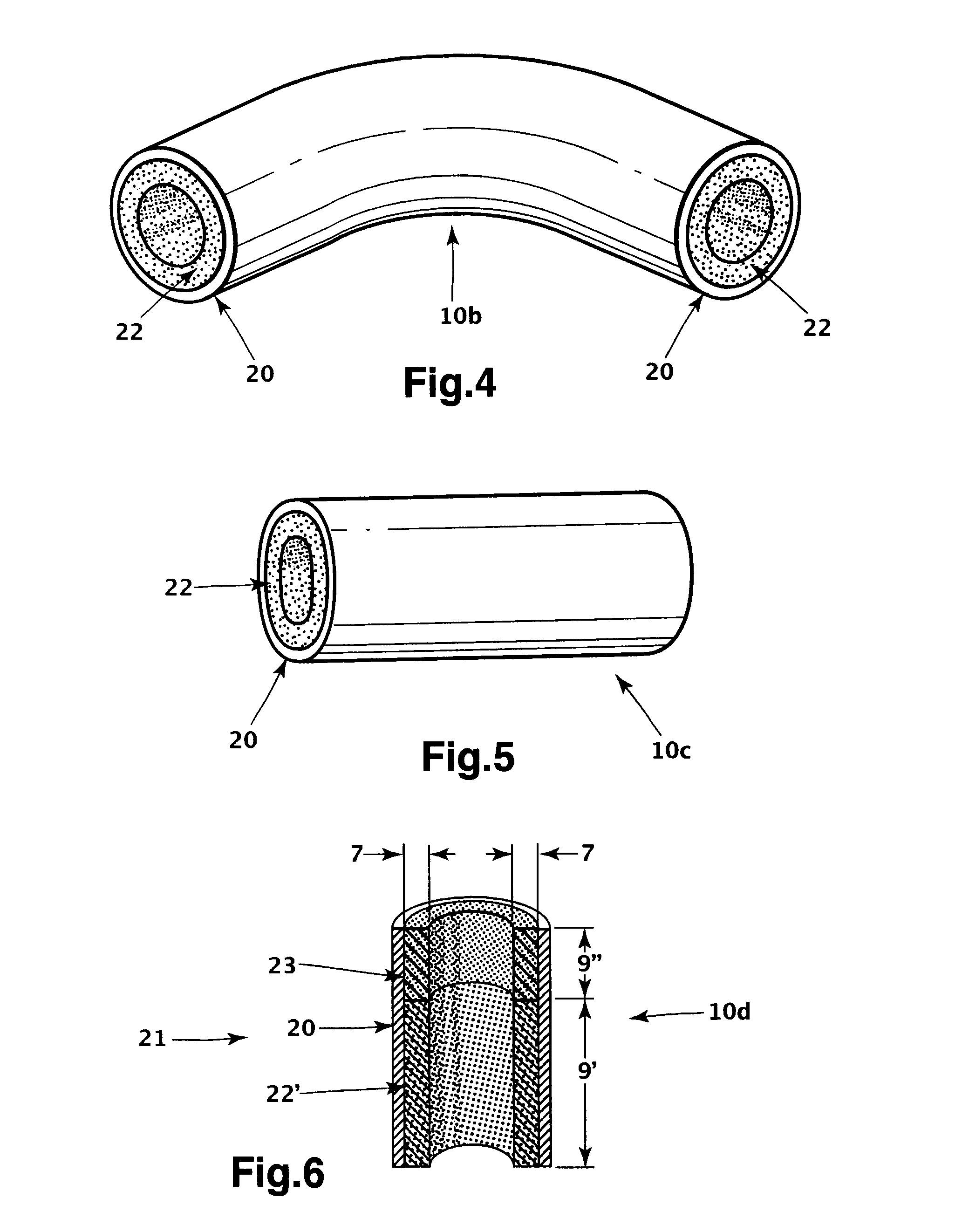Metal tube with porous metal liner
a metal tube and liner technology, applied in the field of metal tubes, can solve the problems of insufficient use of conventional metal foams in many heat pipes, small capillary force, and inability to meet the demand of heat transport capability in the industry, and achieve the effect of better controlling the thickness of the porous liner
- Summary
- Abstract
- Description
- Claims
- Application Information
AI Technical Summary
Benefits of technology
Problems solved by technology
Method used
Image
Examples
first embodiment
[0091]With respect to FIGS. 1 to 3, a metal tube with porous metal liner 10a will now be described. The metal tube with porous metal liner 10a (shown in FIG. 1) is a straight circular metal tube 20 having an inner wall 18 lined with a straight cylindrical metal foam liner 22. A method of obtaining such a tubular liner from a sheet of metal foam 30 will be described in greater detail below with reference to FIGS. 9 to 15. The metal foam liner 22 is metallurgically bonded in thermo-conduction with the metal tube 20. A method for making the metal tube with porous metal liner 10a will be described in greater detail below with reference to FIGS. 16 to 20.
[0092]As best seen in FIG. 2, the metal tube 20 has two open ends 21. It is contemplated that, for some applications, one end 21 would be closed (not shown), partially or totally. The metal tube 20 is made by extrusion and as a result has no seam. Although it is preferable that the metal tube 20 has no seam for applications such as heat ...
second embodiment
[0098]In a metal tube with porous metal liner 10b, shown in FIG. 4, the metal tube 20 and metal foam liner 22 are curved and form a curved metal tube with porous metal liner 10b. To obtain such a curved metal tube with porous metal liner 10b, one curves with conventional techniques the metal tube with porous metal liner 10b after the metal foam liner 22 has been inserted into and bonded to the metal tube 20. It is also possible to curve the metal tube with porous metal liner 10b after it has been transformed into a heat pipe.
third embodiment
[0099]In a metal tube with porous metal liner 10c, shown in FIG. 5, the metal tube with porous metal liner 10c has a flattened profile. To obtain such a flattened metal tube with porous metal liner 10c, one flattens with conventional techniques the metal tube with porous metal liner 10c after the metal foam liner 22 has been inserted into and bonded to the metal tube 20. It is also possible to flatten the metal tube with porous metal liner 10c after it has been transformed into a heat pipe.
PUM
| Property | Measurement | Unit |
|---|---|---|
| thickness | aaaaa | aaaaa |
| thickness | aaaaa | aaaaa |
| length | aaaaa | aaaaa |
Abstract
Description
Claims
Application Information
 Login to View More
Login to View More - R&D
- Intellectual Property
- Life Sciences
- Materials
- Tech Scout
- Unparalleled Data Quality
- Higher Quality Content
- 60% Fewer Hallucinations
Browse by: Latest US Patents, China's latest patents, Technical Efficacy Thesaurus, Application Domain, Technology Topic, Popular Technical Reports.
© 2025 PatSnap. All rights reserved.Legal|Privacy policy|Modern Slavery Act Transparency Statement|Sitemap|About US| Contact US: help@patsnap.com



